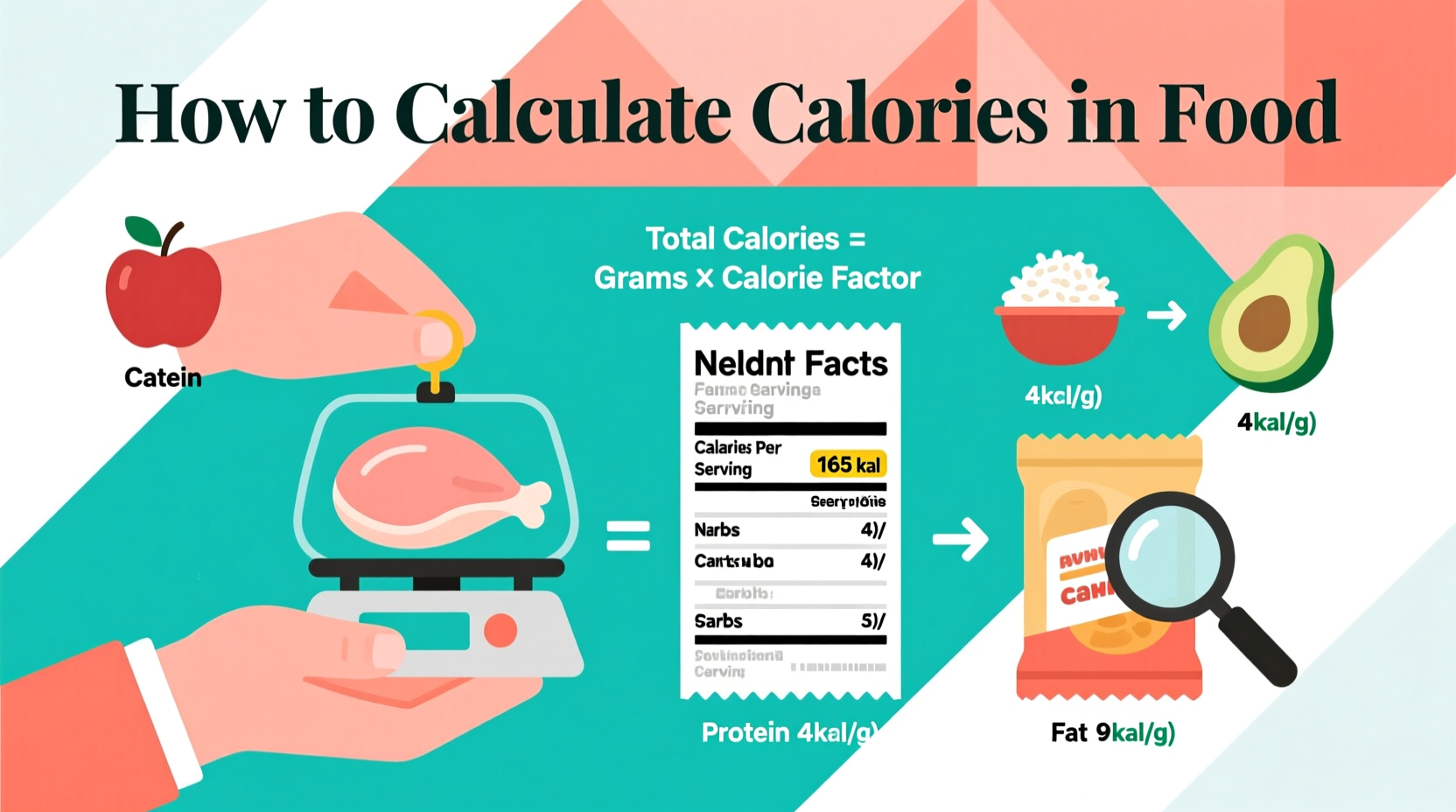Accurately figuring out calories in food involves three primary methods: checking nutrition labels for packaged items, using food databases like USDA FoodData Central for raw ingredients, and calculating based on ingredient proportions for homemade dishes. Professional labs use bomb calorimetry for precise measurements, but for everyday use, digital tools and standardized databases provide reliable estimates within 5-20% accuracy.
Understanding your food's calorie content is essential for informed dietary choices, whether you're managing weight, tracking macros, or simply eating more consciously. This guide breaks down practical, science-backed methods to determine calories in any food item, from store-bought products to complex homemade recipes.
Why Calorie Accuracy Matters for Your Health Goals
Calorie counts directly impact your energy balance—consuming more than you burn leads to weight gain, while a deficit supports weight loss. According to the USDA National Agricultural Library, each gram of fat contains 9 calories, while protein and carbohydrates each provide 4 calories per gram. Alcohol contributes 7 calories per gram, often overlooked in casual tracking.

Step-by-Step Methods to Determine Food Calories
Method 1: Reading Nutrition Labels (Packaged Foods)
For commercially prepared foods, nutrition labels provide the most direct calorie information. The FDA requires these labels to list calories per serving with 20% margin of error allowed. Always check:
- Serving size (often smaller than expected)
- Total calories per serving
- Calories from fat (helps understand macronutrient breakdown)
Pro tip: Compare "per container" versus "per serving"—many products contain multiple servings despite seeming like single portions.
Method 2: Using Food Composition Databases (Raw Ingredients)
For unpackaged items like fruits, vegetables, and bulk ingredients, consult authoritative databases:
- USDA FoodData Central - The gold standard with over 400,000 food items
- Nutritionix API - Used by many popular tracking apps
- MyFitnessPal database - Community-sourced but requires verification
When using these resources, search by specific variety (e.g., "Fuji apple" vs just "apple") for greater accuracy, as nutritional content varies significantly between cultivars.
| Method | Accuracy Range | Best For | Time Required |
|---|---|---|---|
| Nutrition labels | 80-100% | Pre-packaged foods | 5 seconds |
| USDA database | 75-95% | Raw ingredients | 30-60 seconds |
| Recipe calculation | 70-90% | Homemade dishes | 2-5 minutes |
| Restaurant estimates | 50-80% | Eating out | 1-2 minutes |
Method 3: Calculating Homemade Food Calories
For recipes you prepare yourself, follow this precise calculation process:
- Weigh all ingredients before cooking using a digital kitchen scale
- Look up each ingredient's calories per gram in USDA FoodData Central
- Multiply weight by calories per gram for each component
- Sum all values for total dish calories
- Divide by number of servings to get per-serving count
Remember that cooking methods affect final calorie density—boiling leaches nutrients into water, while frying absorbs oil. A study published in the American Journal of Clinical Nutrition found that preparation method can alter perceived calorie content by up to 25%.
Method 4: Restaurant and Takeout Estimation
When eating out, use these strategies for reasonable estimates:
- Check chain restaurant websites—they often publish nutrition information
- Use apps like MyFitnessPal that crowdsource restaurant data
- Apply the "plate method": 50% vegetables (low calorie), 25% protein, 25% carbs
- When in doubt, assume 300-400 calories for appetizers, 500-700 for entrees
Research from the National Institutes of Health shows restaurant meals average 1,200 calories per dish—nearly double typical home cooking portions.
Common Calorie Calculation Mistakes to Avoid
Even experienced trackers make these errors that undermine accuracy:
- Ignoring cooking oils - One tablespoon of olive oil adds 120 calories
- Underestimating portion sizes - Restaurant pasta servings often contain 4-6 cups (vs recommended 1-2 cup)
- Forgetting condiments - Two tablespoons of ranch dressing adds 140 calories
- Assuming "healthy" equals low calorie - Avocado and nuts are nutrient-dense but calorie-concentrated
A JAMA Internal Medicine study found people consistently underestimate calories in restaurant meals by 175-250 calories per dish—enough to cause 2-3 pounds of weight gain monthly.
Advanced Tools for Precision Tracking
For those needing higher accuracy, consider these professional-grade resources:
- Digital food scales with nutrition databases - Models like Escali Nutri weigh and calculate simultaneously
- Professional lab testing - Services like LabCorp offer food composition analysis ($150-$300 per sample)
- Bomb calorimetry explained - The scientific standard measures heat released when burning food samples
While home users won't need lab testing, understanding these methods reveals why some tracking apps provide more reliable data than others—those integrating directly with USDA databases outperform crowd-sourced alternatives.
When Calorie Counts Can Mislead
Calorie information alone doesn't tell the full nutritional story. Consider these limitations:
- Different macronutrient compositions affect satiety and metabolism
- Fiber content alters net carbohydrate calories
- Individual gut microbiomes process calories differently
- Processing affects calorie bioavailability (whole almonds vs almond butter)
As noted by researchers at Harvard T.H. Chan School of Public Health, 100 calories of soda affects your body differently than 100 calories of broccoli due to fiber content, nutrient density, and metabolic processing.
Building Sustainable Tracking Habits
Instead of obsessive daily counting, implement these practical approaches:
- Use the "hand method" for portion control: palm-sized protein, fist-sized carbs
- Track only new or uncertain foods rather than routine items
- Focus on nutrient density rather than calories alone
- Periodically verify your estimates against precise methods
Nutrition science continues evolving—what matters most is developing awareness of your typical intake patterns rather than perfect daily accuracy. Consistent tracking for just 1-2 weeks often reveals enough insight to make lasting improvements.











 浙公网安备
33010002000092号
浙公网安备
33010002000092号 浙B2-20120091-4
浙B2-20120091-4